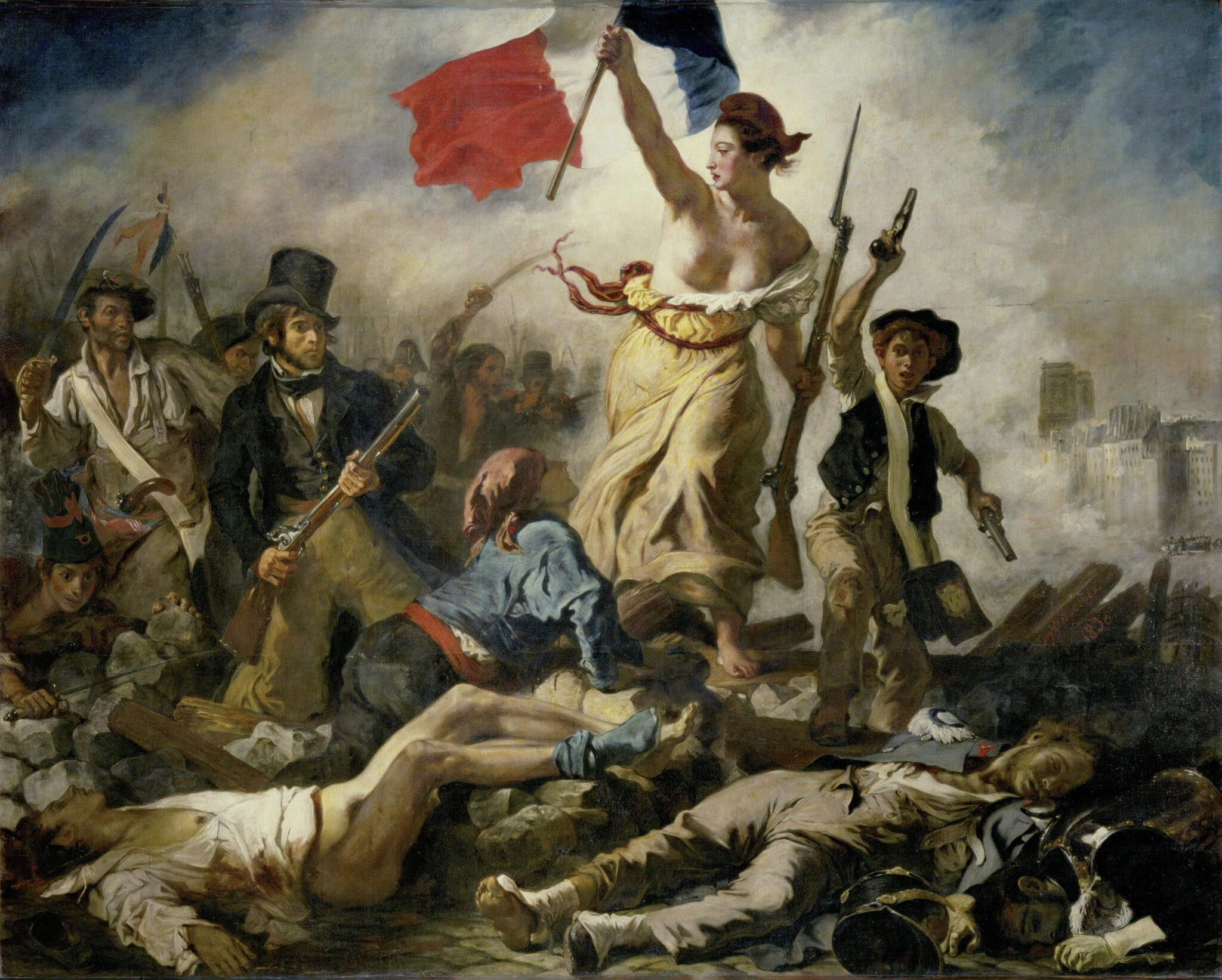France is famously a secular country with a Republican universalist model enforcing a principle of laïcité that upholds the separation of church and state, committing the government to be indifferent towards religions in the political realm and in policy. It takes an intentionally opposing stance to the ‘communalist’ and multi-cultural Anglo-Saxon model exemplified by the United States. However, in practice, French secular Republicanism is a performative anti-racism strategy that upholds a hegemony characterised by Western versions of freedom, female liberation, secularity, and ‘civilisation’. In Sex and Secularism (2009), Joan Wallach Scott uses the term ‘sexularism’ to describe France’s paradoxical foregrounding of female sexuality in its Republican secularism, identifying the hypocrisy and gendered Islamophobia of France.
The construction of brown bodies may be further analysed through the Copenhagen School’s concept of ‘securitisation’, a normative theory which outlines how figures and institutions with authority socially construct and ‘securitise’ people and issues as ‘threats’ through discourse and other communications or media. The French police force and the school system are two such institutions which disperse a whitewashed history and culture that marginalises and ‘securitises’ the ‘other’– particularly Muslims or those from France’s former colonies in the Middle East- North Africa region. This occurs along gendered lines, with brown men being perceived as terrorists or gang members, and veiled Muslim women either viewed as submissive victims of their husbands and Islam, or as anti-social threats to Western civilisation and the community. In the context of France currently celebrating being the first state to enshrine the freedom to abortion in its constitution, their targeted attacks of non-Western women reveals a stark double standard and a rejection of true ‘freedom’ for women.
In 2023, two major events showcased the gendered nature of systemic racism in these two realms. In June 2023, footage circulated of 17-year-old Nahel M, of Algerian descent, being shot point blank by officers as he drove away from them after being stopped, despite their claim that he was driving at them. Despite this murder being part of a clear pattern of racialized police violence against young men of colour, Finance Minister Bruno Le Maire told the British press that it was “totally unacceptable” to say that the French police are racist due to the colour-blind policy of the Republic. A few months later as French children prepared to return to school, the Education Minister Gabriel Attal announced a ban on abayas – a simple, loose over-garment – in schools. Claiming that students should be protected from potential religious discrimination, it has instead led to female students being harassed by school administration for wearing simply any kind of loose-fitting clothes, whether an open kimono or other types of cultural long dresses.
In the French state of ‘sexularism’, the country is symbolised by the bust of the figure of Marianne, the “goddess of liberty,” depicted in many French artworks, including the famous Liberty Leading the People by Eugène Delacroix (1830) which celebrates the Second French Revolution. The showcasing of breasts has always been symbolic of the ‘emancipatory’ Republic, which underpins the 2010 Parliamentary commission discussing the full veil in France, and the resulting campaign to ban it from public spaces in 2011 entitled “the Republic is lived with an uncovered face.” Muslim women and their choice of covering have since been constructed (once again) as a major geopolitical threat and an invasion of French liberty. This ‘affair’ began with ‘the battle of the veil’ in colonial Algeria in the 1950s under French colonisation, and it has followed a pattern of colonial white saviourism that reproduces racialized and gendered tropes. It resembles the phrase of Gayatri Chakravorty Spivak, that ‘white men are saving brown women from brown men’, which arose in the context of the 1829 interdiction of sati by the British colonial powers – silencing the female voice in relation to this practice of self-sacrifice performed by widows in India. Today, young girls in long dresses in French schools have been told to wear belts to differentiate their dress from abayas, and to “show off their curves,” ironically in an effort to provide them freedom of choice and expression.
Such hypocritical discourse and laws go to an extreme of ‘feminism’ that identifies liberation in the naked female body and sets a standard of sexual ‘freedom’. Élisabeth Badinter, philosopher and writer, is among the French liberal feminists that view the full-face veil as a kind of “civil self-mutilation” and a “pathology.” Invited to speak in the Assemblée Nationale’s 2010 commission on the “headscarf affair,” she is quoted describing these women as “sick” deviants of “perverse satisfaction: power over others due to the lack of reciprocity, exhibitionism, voyeurism.” Supported by art historian Nadeije Laneyrie-Dagen, she referenced Greek, Roman, and Enlightenment culture and philosophy to describe the importance to Western civilisation of one’s individuality in the face and body.
This crisis of sexularism and Islamophobia must be seen a systemic problem that is rooted in Western Enlightenment ideals, and as an issue that is perpetuated by continual universalist-Republican readings of the centuries old Declaration of the Rights of Man and Citizen and the French Constitution in a country that refuses to acknowledge its wrongdoings and legacy of its colonial projects. In this sense, the solution is not just to pursue a communalist and multicultural approach like that of the United States, United Kingdom and France’s European neighbours – for they also discriminate against non-white people, and especially against immigrants. Particularly seen with the international solidarity for the death of George Floyd, this is not just an issue of colour-blind Republicanism, but of an international system of white-supremacy and Western civilisation that takes insidious gendered and racialized forms.





